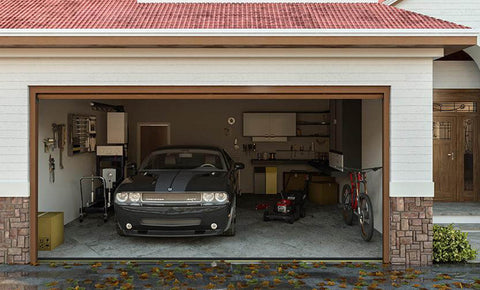Follow These Simple Steps to Make Your Garage Energy-Efficient This Winter

If your house is too cold during winter, chances are you’ll do something about it. You’ll turn up the thermostat, put in weatherstripping or block drafty doorways. Yet how many of us will take such steps when our garages are frigid? The number is probably a lot smaller because many of us don’t think of our garage as part of our home. Despite that fact, your garage can have a major impact on our utility bills.
Frosty air can get into our houses through the garage. That means our furnaces have to work that much harder to keep us warm. An energy-efficient garage is just as important as taking care of the spaces in which we spend the most time, but unfortunately, it’s often overlooked. Here are some tips for better ensuring your garage does as much as it can to save energy.
INSULATE YOUR GARAGE DOOR
If your door doesn’t have adequate insulation, you may be losing a lot of heat through it. Although you could invest in an insulated model as a replacement for your existing one, it’s also easy to find kits that allow you to add more protection and improve its performance from a heat-retention perspective.
USE CAULK BETWEEN YOUR WALLS AND FLOOR
Because most garages aren’t built with the same level of care as homes, there’s a tendency for their walls to shrink, settle and expand over time. That can leave gaps between them and the floor. This allows cold air to seep in and warm air to seep out, hurting its energy efficiency. The good news is, for the price of a few bottles of silicone caulk, cold air can be easily remedied.
INSTALL A GARAGE DOOR THRESHOLD SEAL
It isn’t uncommon for doors to have at least a small gap along the bottom. However, this can make it easy for colder air to enter the building. Adding a threshold seal such as those made by Garadry can put an end to this. Use our guide to help you choose the seal that’s the right fit for you.
INSULATE OUTLETS AND LIGHT SWITCHES
Few people think to cover these, but even the tiniest cracks can allow outside air into the house. Specialized foam gaskets inserted between the cover plates and the wall will block those seams and keep the entire space insulated.
USE SOLAR HEATING
One of the more elaborate but effective ways to reduce your garage’s energy consumption is to take it off the grid as much as possible. Solar panels on your roof can power an electric heater, or you can even find instructions for building a passive solar heater online.
USE WEATHERSTRIPPING AROUND THE DOOR
Gaps along the sides of your garage door can be sealed with weatherstripping. This will prevent warmer air from leaving your garage.
Even if you’re not aware of it, your garage could be costing you a lot on your utility bills. Follow this advice, and you can be more confident you’ll save money even as the temperature drops.
